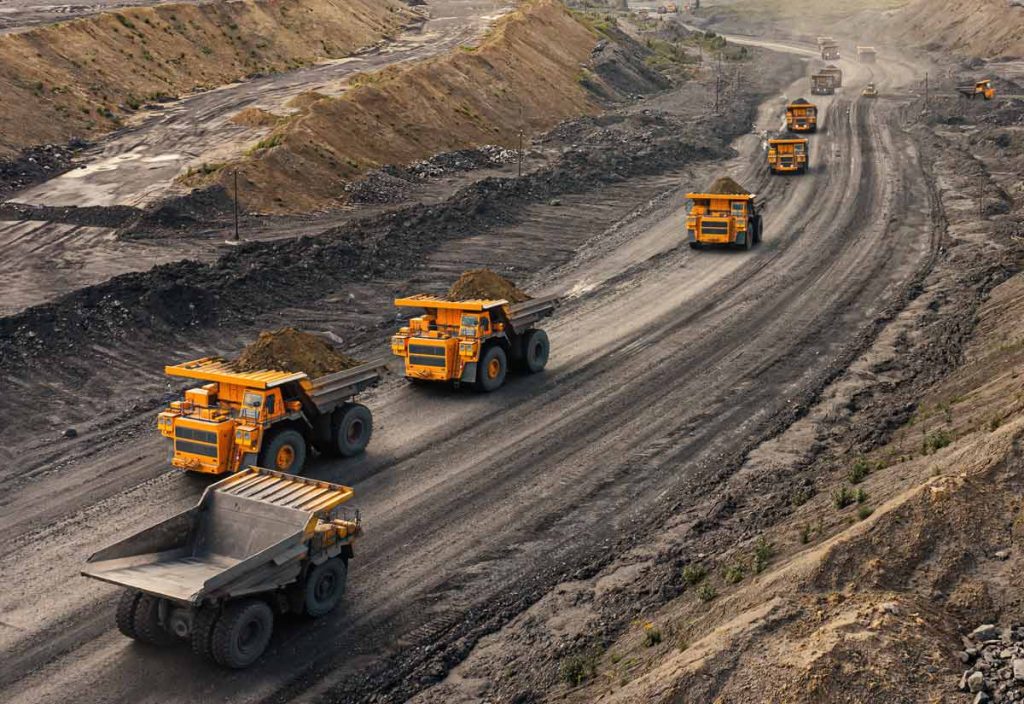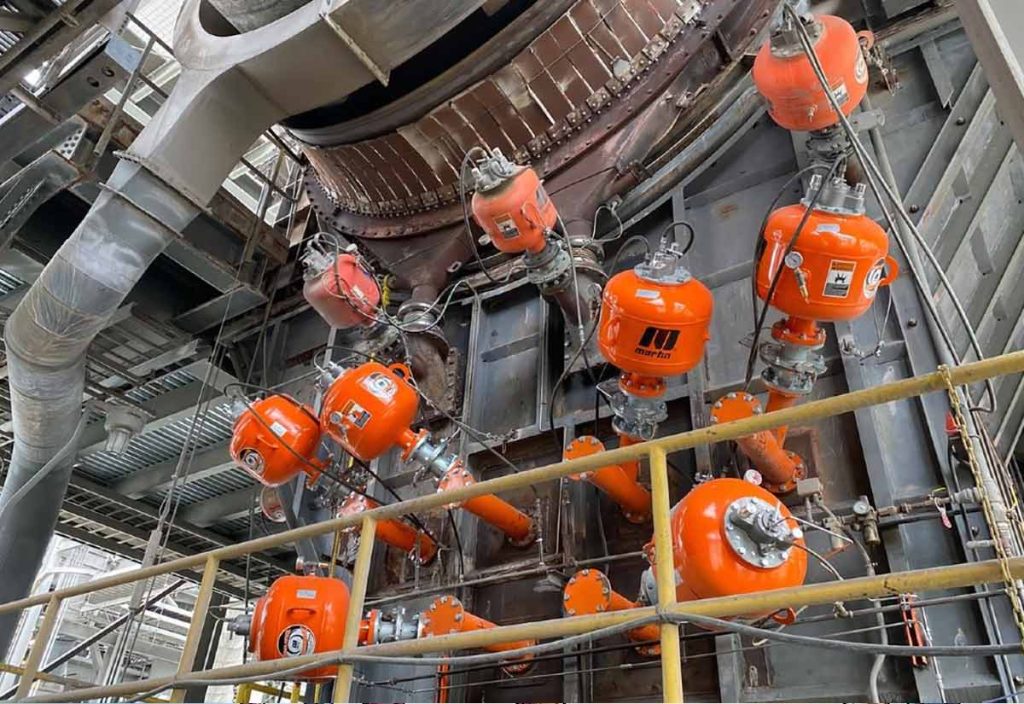“Artificial Intelligence hiring activity increased by 7% in the mining industry in Q1 2023”- Global Data via Mining Technology
The Top 5 Mining Industry Leaders in AI Hiring
If AI-related job creation is the benchmark for hiring trends, according to GlobalData statistics, the Top 5 companies posting artificial intelligence-related new jobs for Q1 2023 in the mining sector includes some impressive industry leaders:
- ABB- posted 326 jobs
- Eaton 157 jobs
- Caterpillar 150 jobs
- Komatsu 114 jobs
- Rio Tinto 106 jobs
Combined, these major league mining leaders accounted for a combined share of 50% of all artificial intelligence-related new jobs in the global mining industry. US companies alone accounted for 43.78%. That’s far ahead of #2 India at 8.02%, and #3 Canada with new AI jobs at 6.63%. The AI-related job share represented by the US was six percentage points higher than the previous 38.24% share it posted in Q4 2022.
So what’s behind the boost in the Artificial Intelligence hiring trend, specifically in the mining industry? With global demand for industrial minerals at unprecedented levels it all comes down to the most reliable benchmarks of all.
Return on Investment with increased production.
AI Transformation in Mining Operations: Can You Dig It?
With Artificial Intelligence making clickbait headlines this summer of 2023, once again thanks to the ubiquitous engineer/billionaire Elon Musk, it’s a good idea to separate Elon’s Google-ready gloom and doom AI sci-fi speculations from the profitable, productive real-world AI smart mining applications that many are calling The 4th Industrial Revolution.
To answer the question “Can artificial intelligence dig it in the mining industry?”, we took a look at one successful digital operations transformation in action since 2018, an AI investment showing impressive returns in increased production for copper mining giant Freeport-McMoRan, in partnership with McKinsey and Company data scientists.
“As the weeks went by, the copper-ore concentrating mill sustained a faster pace with no loss of efficiency. The data model had been right: the mill could handle more ore than its operators thought.”
How did the AI conclude that Freeport-McMoRan’s copper-ore concentrating mill in Bagdad, Arizona, could pick up the pace? In this case, AI could easily stand for “Awareness Input”. The data model used by the AI to analyze production capabilities of the operation relied on hundreds of individual, strategically placed sensors throughout the plant.
The custom-built McKinsey AI also has its data warehouse stocked with three years’ worth of operating data from the copper-ore mill. Tailored for the Bagdad operation specifically, the AI model was programmed to look for any operational tweaks that would boost output. And what a “tweak” it came up with.
The AI’s conclusion? Copper production would rise if the mill were fed with more ore per minute. But as any engineer worth his salt will tell you, the TANSTAAFL rule applies, and when it comes to cranking up the production pace of any industrial operation “There Ain’t No Such Thing As A Free Lunch”.
With continuous access to hundreds of machine-monitoring sensory inputs and the ability to precisely analyze 3 years of operational data, human concerns about minimum stockpile volumes, and other well-intended but perhaps overly cautious and inherently limited human ideas about how the mill should run were set aside. The AI model recommendations were boldly put into action on the morning of October 19, 2018.
Within 12 hours the “minimum stockpile” myth that so concerned human operators was busted. Crushers and conveyors were ramped up to the new faster pace with no loss of efficiency as predicted logically by the AI. With multiple sensors on all essential production equipment, the mine continued to sustain production at the increased pace for week after week.
Thanks to Internet of Things technology and sensors, essential mining equipment can be monitored by AI and maintained before breakdowns occur. Sensors monitor temperature, speed, and vibration of machines, allowing operators to take appropriate action. Preventative maintenance now becomes cost-effective predictive maintenance. By assessing real-time data and analytics, mining operations can be safer and more profitably productive.
As the weeks went by, the Bagdad mill sustained the faster pace with no loss of operational efficiency. The AI data model had been right, and the mill could easily handle much more ore per minute than its human operators had assumed.
“That was the breakthrough we’d been looking for. Once we started to run the mill at full speed, we knew we could get results from more of the recommendations that the model was making.” – Justin Cross, the Bagdad site’s general manager.
AI on the Industrial Scale: Rio Tinto Smart Mines
Rio Tinto, #5 on our AI jobs hiring list above, has been investing their “smart money” on artificial intelligence in mining operations since at least 2008 when the company first launched autonomous haulers at various operations around the world.
According to the “Smart Mining” info at the mining giant’s website, self-driven haulers were just the beginning of a major transformation.
“Every day our automated drills, trucks, shovels, conveyors, trains and ships produce huge amounts of valuable data. By combining this data with clever analytics, artificial intelligence, machine learning and automation, we are making our business safer and more productive.“
While custom-built AI improving operations at individual sites such as the Bagdad copper operation above are impressive AI use cases, Rio Tinto takes AI deployment to a true industrial scale.
Rio Tinto’s MAS: Mine Automation System
Operational insight is the key to AI success and Rio Tinto’s MAS Mine Automation System is a case in point. MAS operates like a network server application, compiling data from 98% of the company’s sites, and literally mining it for information that can be analyzed to boost production while increasing safety and efficiency on an industrial, company-wide scale.
MAS provides this vital information in a common format, using sophisticated algorithms. It can be displayed visually using the company’s RTVis™ (Rio Tinto Visualisation) or through more traditional operational dashboards with the conventional, human-friendly, graphs, charts and tables.
For mine operators, this translates to the ability for MAS to:
- Automatically generate ore body models
- Organize equipment dispatch
- Predict and control blasts
- Improve drilling accuracy
- Optimize the speed and reduce queuing of autonomous ore-hauling trucks
- Reduce explosive use
- Improve waste classification to reduce waste material hauling
So where does the human workforce fit into the big mining AI picture and how can the 7% quarterly rise in hiring be accounted for?
Rio Tinto has 1,700 people using RTVis™ at 98% of their mines. According to the innovative company, “New features of the software are rolled out to all sites around the world in a matter of hours, capturing synergies across [the organization’s] business and yielding significant savings in time, effort and expense.”
About Resource Erectors
When it’s time to get smart about hiring the top qualified heavy industry professionals your company needs to compete and produce in today’s demanding industrial sectors it’s time for Resource Erectors. We specialize in recruiting and matching professional level candidates with the industry-leading companies across North America who know that their human resources are among their most precious resources.
That’s why our company clients are offering competitive compensation packages to recruit and retain the top talent with career-enhancing opportunities in mine management, industrial minerals processing, bulk materials, sales, safety, civil construction, concrete, aggregates, and more. When you’re ready to make a heavy industry career move you’re ready for Resource Erectors so don’t hesitate to contact us today.








